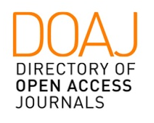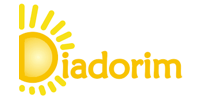Submissions
Submission Preparation Checklist
All submissions must meet the following requirements.
- 1- There are no fees for publishing and it is an open-access journal.
- 2- The author is committed to the journal’s Ethical Commitment (See the section Ethical Commitment).
- 3- The submission has not been previously published, nor is it before another journal for consideration (or an explanation has been provided in Comments to the Editor).
- 4- Authors have significantly contributed to the research that originated the submission.
- 5- If submitting to a peer-reviewed section of the journal, the instructions in Ensuring a Blind Review have been followed.
- 6- Authors are obliged to provide retractions or corrections of mistakes.
- 9- The text is single-spaced; uses a 12-point font; employs italics rather than underlining (except with URL addresses); and all illustrations, figures, and tables are placed within the text at the appropriate points, rather than at the end.
- 10- The text adheres to the stylistic and bibliographic requirements outlined in the Author Guidelines.
- 7- The submission presents a list of references, information about financial support, and where available, URLs for the references have been provided.
- 8- The submission file is in Microsoft Word or RTF format.
Articles
Open Topic Articles or Dossier (Special Issue) Articles
Carefully read the instructions below:
1. Transversal: International Journal for the Historiography of Science only publishes original articles. The expectation is to receive articles that do not have substantial similarity to articles or chapters of books already published by the author and have not been subject to any other publishing or editorial process. Once published in Transversal: International Journal for the Historiography of Science, the text can be published elsewhere with our authorization as long as the initial publication is noted.
2. The dossiers will be based on the contributions of distinguished scholars, but, as with open topic manuscripts, each original copy submitted will be subject to a double-blind review following the quality standards of international publications.
3. The Editors-in-Chief and the Editorial Committee will decide on the appropriateness of each open topic manuscript submitted and whether or not it will be subject to review. It is a requirement that every author or co-author has a Ph.D. degree. The original manuscript should not display the author’s name or the institution of origin, nor should there be any personal acknowledgments or self-references. If the submitted manuscript is accepted, the author will be asked to include the information mentioned above.
4. The articles should be no more than 10.000 words, including notes, keys, pictures, tables, illustrations, and bibliographic references. Use a word count for the whole article and consider that each image, table, or diagram will correspond to 300 words.
5. It is also required that each article has a title, an abstract, and five keywords. The abstract should be a maximum of 150 words.
6. Numbers from one to ten should be written as word, as well as round tens and hundreds (twenty, three hundred), but we recommend the use of figures for ages (50 years) and time (3 months, 7 minutes, 80 years).
7. Extended quotes (more than five lines) must be separated as one independent paragraph, indented on the left. No quotation marks should be used. Short quoted texts (up to five lines) should be inserted in the text between quotation marks.
8. Full references should be listed in alphabetical order at the end of the article.
9. Op. Cit., Ibid, Idem are not used. Long explanatory notes should be avoided. Whenever possible, limit footnotes to approximately one per paragraph. The primary sources or data (letters, rules, etc., archival items) should remain in footnotes, and they are not expected to be included in the final list of references.
10. Images: charts, tables, figures, illustrations, graphs, and drawings must be submitted in separate files from the text. Digital images should have high resolution (not interpolated), JPEG format, color RGB. Charts or tables must be in Word, and the graphs or spreadsheets in Excel. They should include titles and sources. All images must be numbered and have a key with a source citation. The author must present the rights for the use of each image or state that the image is in the public domain. The original color of the images will be preserved in the online version, but they will be in black and white in the printed version. The Editorial Committee will analyze special cases. Each image will correspond to 300 words concerning the final word count of the article (and will be considered part of the limit of ten thousand words).
Book Reviews
Book reviews are expected to consider books in the historiography of science first and foremost.
1. The book reviews should be between 2.000 and 3.500 words. Books should have been published in the same year as the submission or the year immediately before that.
2. The authors are required to address the following issues: What are the main arguments and aims of the author? Does the book develop the arguments well enough to reach its aims? Where does the work stand in the contemporary debates on the theme? Is the book supported by good documental work, and is it pertinent to the theme? What is the historiographical or philosophical meaning of the book? Is the writing clear and correct?
3. It is recommended that the reviewers do not summarize chapter per chapter of the work in question but discuss its general aspects.
4. Quotations from work being reviewed should include the page number. For example, “Not only this notion of revolution but also the beginnings of an idea of revolution in science date from the eighteenth-century writings of French Enlightenment philosophes who like to portray themselves, and their disciplines, as radical subverters of ancient régime culture” (Shapin 1998, 3).
5. Book reviews should not have footnotes.
6. Book review authors should be at least Ph.D. candidates. The editors can analyze exceptions.
Copyright Notice

This work is licensed under a Creative Commons Attribution 4.0 International License.
Privacy Statement
The names and addresses informed in this journal will be used exclusively for the editorial services provided by this publication and will not be made available for other purposes or third parties.











